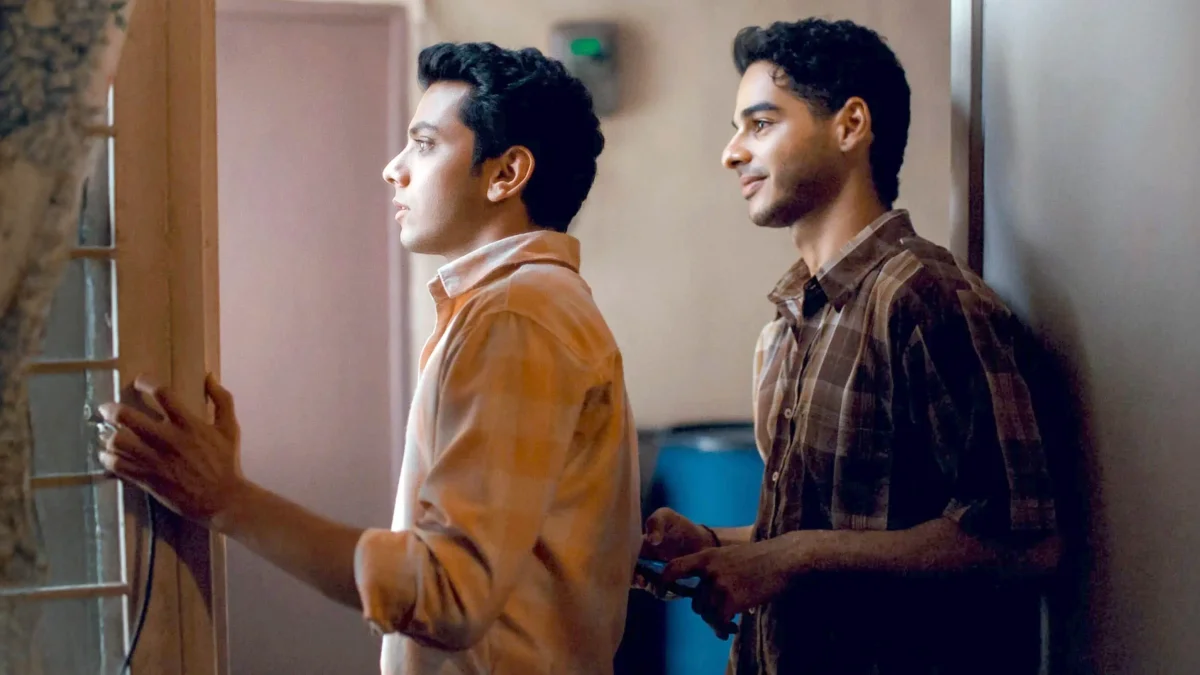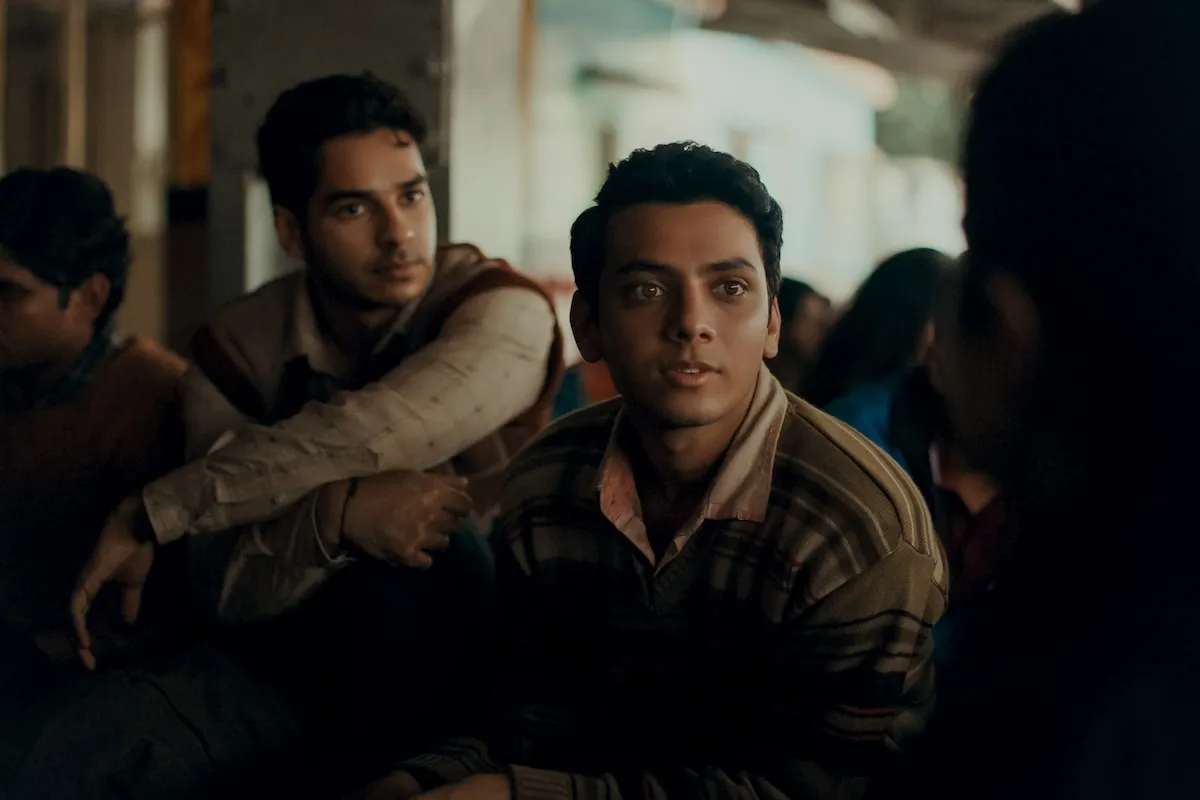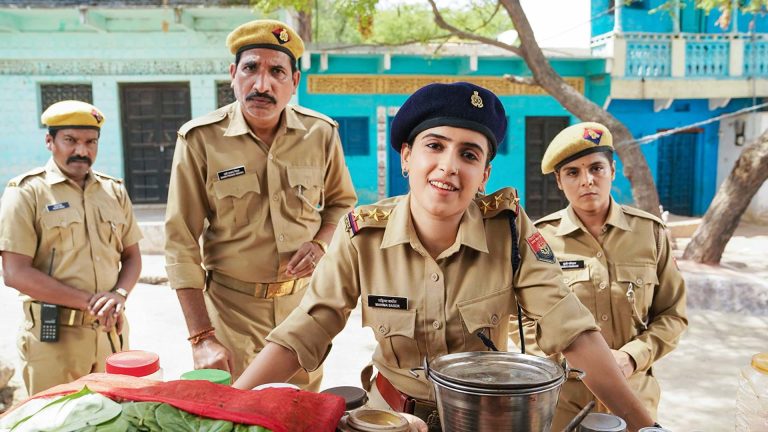Please Note: The article contains spoilers.
Neeraj Ghaywan’s “Homebound” (2025) stands as a profoundly moving portrait of contemporary India, weaving together themes of humanism, empathy, and social realism to illuminate lives relegated to the margins.
The story of “Homebound” is inspired by Basharat Peer’s acclaimed New York Times article “A friendship, a pandemic and a death beside the highway,” which chronicled the story of two childhood best friends, Saiyub and Amrit, making an arduous journey back home during the COVID-19 lockdown, which is both deeply personal and universally resonant. The story reached Peer through social media in 2020, and he came across a harrowing photograph of Saiyub cradling a heat-stroked Amrit on a deserted highway.
“Homebound” also draws from Ghaywan’s personal history of his family home and childhood friendships, which grounds the narrative further. The bearing of the two lead characters played by Vishal Jethwa and Ishaan Khatter reflects centuries of oppression, yet the two are a pleasure to watch because of their aspirational hearts and their tender, unadorned friendship.
The film’s pulse is furthered by the character played by Janhvi Kapoor, an Ambedkarite woman who embodies a strong moral compass. Ghaywan’s delicate direction, combined with the metered performances of all the actors, creates an immersive film. “Homebound,” despite offering a heavy social commentary, avoids moralizing. The film lets silence, gesture, and cinematic realism carry the heart of the message.
The reception to “Homebound” has mirrored its emotional resonance; the film received a nine-minute standing ovation at Cannes in May 2025. It won Best Film and Best Director at the Indian Film Festival of Melbourne. At the Toronto International Film Festival, it was awarded the second runner-up position for the International People’s Choice Award, earning a standing ovation. The film won the Audience Award at the Warsaw Film Festival, along with Best International Feature Film at the Zurich Film Festival.
Audiences and critics alike were moved to tears, with Basharat Peer himself admitting the adaptation achieved a remarkable sensitivity, capturing “what is said and implied between the lines”. By centering individual stories against the backdrop of mass migration and endemic prejudice, the film offers viewers not easy answers, but compassion and understanding.
The fictionalization of characters, necessitated by censorship, ironically underscores how fiction and reality frequently merge within India’s self-conception; the boundaries between the two are blurred and often negotiated at great cost. Films such as “Homebound” do not merely entertain; they educate, agitate, and embolden viewers to see and remember those whom society prefers to forget. Through them, the daily struggle for dignity and solidarity is made visible, forming the true heart of Indian cinema’s potential for social transformation.
Also Read: Homebound (2025) ‘Cannes’ Movie Review: Neeraj Ghaywan’s Sophomore Feature Continues His Caste Examination With A Classically Dramatic Touch
Ghaywan’s signature as a director is his capacity for humanistic storytelling and realistic portrayal of caste and class. Homebound radiates the same warmth and empathy found in “Masaan” (2015). Neeraj Ghaywan’s debut, over the past decade, has been acclaimed for its stark portrayal of grief and social divides. In both his films, he relies on sparse background music, extended takes, and restrained performances to draw viewers into the characters’ inner lives.
In “Homebound,” the camera lingers thoughtfully on small, quotidian moments, the toll of physical exhaustion, exchanged glances, and the rhythm of travel through empty highways. This allows the viewer to absorb not just what happens, but its emotional texture. This stylistic choice resists hurried or dramatized storytelling, inviting a slow, meditative exchange with the film.
Indian audiences, however, don’t get to watch “Homebound” in all its glory. The film has faced notable censorship challenges before its release, reflecting India’s restrictive environment regarding films that address contentious issues of caste, religion, and social order.
The Central Board of Film Certification (CBFC) mandated 11 specific changes to the film, which included muting or altering words related to caste, deleting certain dialogues, trimming visual content, and shortening sequences considered potentially provocative, particularly those involving socio-political or religious references. Given the highly sensitive subject matter, “Homebound” opens with a prominent disclaimer asserting that all characters are fictional and any resemblance to real persons is coincidental.
The disclaimer is also a tacit comment on the boundaries imposed by state censorship: even when films strive for realism and social truth, filmmakers must preemptively distance their narratives from identifiable people or incidents. The disclaimer highlights the ethical responsibility to protect vulnerable subjects while simultaneously underscoring how deeply censorship shapes artistic expression and the recounting of lived experience in India.
In the context of India’s fraught social realities, “Homebound” is a courageous act of political resistance. The film challenges dominant narratives; it doesn’t view caste or religion as markers of division, it sees division as the essential commonality shared by all who live under oppression and explores their desire for dignity, safety, and belonging. The film elevates personal stories to political testimony, advocating recognition and justice through empathy rather than confrontation. With this film, the humanist gesture moves past the screen, beyond mere artistic daring; it confronts the unavoidable fractures of society instead of offering polished moral assurances.
“Homebound” forms a poignant addition to a rich lineage of Indian films that confront social fault lines with empathy. It is essential to frame “Homebound” within this broader cinematic conversation to be studied alongside other impactful films. Anubhav Sinha’s “Bheed” (2023) is a natural thematic companion to “Homebound.” Like Ghaywan’s film, “Bheed” centers on the harrowing migrant crisis during the COVID-19 lockdown, depicting the forced exodus of laborers from urban centers back to their villages.
Shot in stark monochrome, “Bheed” portrays the anonymity and invisibility of the migrants caught in a system indifferent to their survival. In this way, it contrasts Homebound’s intimate friendship narrative with a collective portrait of suffering, foregrounding the systemic failures that compel such journeys. Both films reject dramatization in favor of sober realism: “Bheed” through its ensemble depiction of struggle, and “Homebound” through its focused exploration of individual relationships. The two films broaden our understanding of the pandemic’s social repercussions from a public to a personal scale.
Must Read: The 10 Best Indian Movies of 2025 (So Far)
“Sairat” (2016), directed by Nagraj Manjule, offers a crucial caste dimension that echoes powerfully within “Homebound.” While “Sairat” is often celebrated as a tragic love story between an upper-caste girl and a Dalit boy, it fundamentally interrogates the violent caste hierarchies that permeate rural India. The film’s raw portrayal of honor killings and societal backlash complements Homebound’s depiction of caste and religious discrimination. Both films illustrate how caste is not a relic but a living, breathing force shaping destinies in our society, whether in rural Maharashtra or the semi-urban milieu of Ghaywan’s narrative.
Mari Selvaraj’s “Pariyerum Perumal” (2018) is another vital film in this thematic canon, with a sharper focus on caste atrocities in Tamil Nadu. The film’s protagonist, a Dalit law student, confronts systemic oppression both in college and society, articulating the deep-seated prejudices that govern everyday interactions.
Like “Homebound,” “Pariyerum Perumal” humanizes individuals navigating hostile social structures and uses personal narrative to reveal institutionalized discrimination. Both directors wield cinematic realism and layered characters to critique caste not as abstract oppression but as a lived, brutal reality. Grounded in regional detail yet infused with universal humanism, both films serve as urgent calls for recognition and reform.
“Article 15” (2019), helmed by Anubhav Sinha, broadens this discourse to the structural manifestations of caste in contemporary India’s law enforcement and judicial systems. Inspired by real events, the film explores how caste-based violence is perpetuated by systemic indifference and corruption, focusing on a police officer’s awakening to caste injustice during an investigation.
The core thematic link with “Homebound” lies in both films’ emphasis on caste and religion as forces that shape state and social institutions, often to the detriment of marginalized citizens. While “Homebound” reveals the microcosm of caste and communal prejudices through the lens of two friends’ survival and aspirations, “Article 15” critiques institutional apathy and challenges viewers to confront uncomfortable truths about caste discrimination codified within law and order frameworks. Taken together, the two films trace how exclusion endures while illuminating the struggle for dignity within the framework of India’s democratic ideals.
Though differing in narrative scope, these films share a commitment to humanistic storytelling that refuses to sanitize the deeply entrenched realities of caste, class, religion, and systemic failure in India. “Homebound” not only honors its cinematic predecessors but also advances the critical conversation on India’s ongoing social fault lines. Through its embrace of poetic realism and humanistic storytelling, “Homebound” joins a critical conversation within Indian cinema and beyond. It is a cinematic gift that compels reflection, compassion, and ultimately, hope.




![Clash [2016] – A Thrilling and Deeply Humane Chamber Piece](https://79468c92.delivery.rocketcdn.me/wp-content/uploads/2017/08/cover-2-768x399.jpg)
![Iraivi [2016] : In the shadow of arrogant men!](https://79468c92.delivery.rocketcdn.me/wp-content/uploads/2016/08/Iraivi.jpg)


